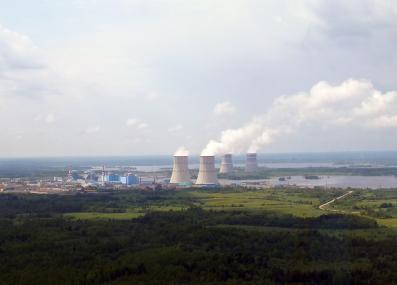Have a question?
What is "clean energy"? Is any kind of energy completely clean?
“Clean energy” usually refers to energy sources that produce no climate-warming greenhouse gas emissions in their operation. That doesn’t mean they have zero impact on the environment.
May 7, 2024
The group of technologies widely considered to be “clean energy” include hydropower, geothermal, solar, wind, nuclear, bioenergy (at least in some circumstances), and even some extremely nascent technologies like ocean wave power. These energy sources are “clean” with regard to climate change because—unlike fossil fuels—when they produce energy they do not emit greenhouse gases, the type of pollution that is warming our planet. The most important of these gases is carbon dioxide (CO2), so “clean” technologies can more precisely be referred to as low-carbon or carbon-free.
Clean energy technologies are in many ways very different from one another, but none directly emit CO2.1
“A key word there is directly,” says Jennifer Morris, a principal research scientist at MIT’s Joint Program on the Science and Policy of Global Change and the MIT Energy Initiative. Even if they do not produce emissions during operation, clean energy technologies all have some “embedded emissions,” like those associated with producing their equipment.
“When you start getting into life cycle assessments and you backtrack through all of the steps that it takes to get to the point that you're producing energy or electricity, then of course there are emissions involved in the different steps along the way,” says Morris. “There's no such thing as a true, perfectly clean energy source.”
Despite the emissions involved in their manufacture and setup, all types of clean energy do far less to warm the planet than fossil fuels. “When you factor in the life cycle assessment, fossil fuels are incredibly more emissions intensive than these clean energy options. So even if they're not perfect, they're significantly better,” says Morris.
All in, a typical coal plant releases about 1,000 grams of CO2 per kilowatt hour of energy produced, according to the the National Renewable Energy Laboratory (NREL), and natural gas releases almost 500 grams.2 By comparison, solar energy typically releases less than 50 grams of CO2 per kilowatt hour, and wind not much more than 10 grams. And these embedded emissions may fall even further as we invent cleaner ways to mine metals, produce steel, cement and other needed materials, and transport and assemble wind turbines, dams and nuclear plants. “There's a lot of room in those areas to reduce emissions,” says Morris.
Fossil fuels also degrade the environment and human health in other ways. Coal-burning power plants emit chemical-laden smoke that worsens air quality. Mining coal can pollute waterways and land. And pulling natural gas from the ground can contaminate groundwater. Air pollution in particular is such a major health problem that coal and oil are estimated to lead to hundreds of times more deaths per kilowatt hour of energy than wind, nuclear or solar power.3
But just because a technology is “clean” in regard to climate change does not mean it’s free of all environmental tradeoffs. Nuclear plants create dangerous waste that must be disposed of. Mining the minerals needed to build batteries or solar panels can spur deforestation and water pollution and degrade the environment in other ways. Not everyone agrees that all low-carbon technologies deserve to be called “clean,” because of concerns with these other environmental impacts.
One final point of confusion is the difference between clean and renewable energy. “Renewable energy” simply means energy that comes from an effectively infinite source, like wind or sunlight. There’s plenty of overlap between clean and renewable power, but they are not identical. Nuclear energy, for instance, is fueled by uranium, of which there is a finite amount on earth. So although it’s “clean” in regard to climate change, it’s not a renewable resource—even if uranium is plentiful. “It's not typically considered an amount we need to worry about exhausting, at least not in this century, but it's not replenishable,” says Morris.
Thank you to Barbara MacLellan of Nanaimo, Canada, for the question.
Submit your own question to Ask MIT Climate
Get the latest from Ask MIT Climate monthly in your inbox
1 With the exception of bioenergy, because burning plant matter does emit CO2. Here, the idea is that plants take CO2 out of the atmosphere when they grow, and burning them simply puts the same carbon back into the air, for no net increase in atmospheric CO2.
2 U.S. Department of Energy, National Renewable Energy Laboratory: "Life Cycle Greenhouse Gas Emissions from Electricity Generation: Update," September 2021.
3 "What are the safest and cleanest sources of energy?" Hannah Ritchie, Our World in Data, February 10, 2020.








